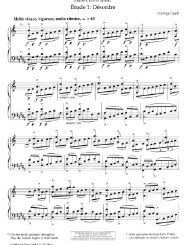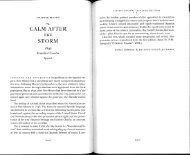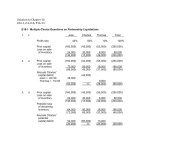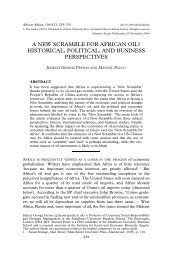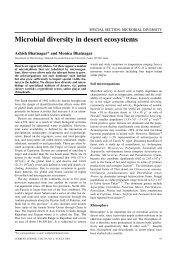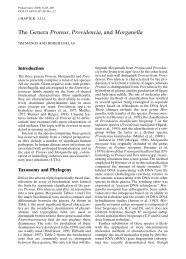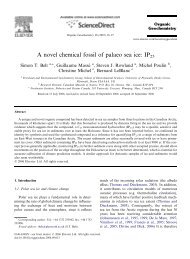Analysis by Key: Another Look at Modulation
Analysis by Key: Another Look at Modulation
Analysis by Key: Another Look at Modulation
Create successful ePaper yourself
Turn your PDF publications into a flip-book with our unique Google optimized e-Paper software.
CARI SCHACHTER<br />
Might we say th<strong>at</strong> bs 29-36 of the Schubert excerpt are in F minor? Yes, I<br />
think, as long as we realize th<strong>at</strong> they are 'in' F minor in a more <strong>at</strong>tenu<strong>at</strong>ed sense<br />
than the Chopin Prelude is. Hearing these bars as containing the V of F minor is<br />
part of our moment-<strong>by</strong>-moment experience of the piece, just as responding to a<br />
false clue is part of our moment-<strong>by</strong>-moment experience of reading a mystery<br />
novel. But in neither case is the experience grounded in the larger reality cre<strong>at</strong>ed<br />
<strong>by</strong> composer or author. The 'tonic' is an expected centre th<strong>at</strong> is never<br />
confirmed; in no sense is its harmony a m<strong>at</strong>rix for the pitch content of the<br />
passage. When we use the word 'tonic' in analysis, we should do well to<br />
remember th<strong>at</strong> it can represent quite different kinds of musical structure. We<br />
can quickly infer a tonic as centre from signals given <strong>by</strong> other pitches; neither<br />
the tonic chord nor even the tonic note need be present. We can infer a tonic as<br />
m<strong>at</strong>rix, however, only through the presence of <strong>at</strong> least two (and typically all<br />
three) of the tonic triad's constituent notes, and these notes must be spread out<br />
through time as the beginnings or goals of significant linear and harmonic<br />
structures.<br />
'<strong>Key</strong>s' without tonics (like the 'F minor' in the Schubert Scherzo) can enliven<br />
a musical foreground precisely because they arouse specific expect<strong>at</strong>ions th<strong>at</strong><br />
they do not fulfil. (Passages of 'roving harmony' which lack any distinct or<br />
abiding tonal focus cre<strong>at</strong>e quite different, though equally valuable, effects.) In<br />
the second half of the eighteenth century, as Charles Rosen points out, cadences<br />
tonicizing VI occurred so frequently near the end of development sections as to<br />
become a cliche.7 Rosen then shows how composers can avoid the cliche <strong>by</strong><br />
withholding the expected goal. 'One way of escaping the eternal cadence on vi<br />
preceding the return to I - or <strong>at</strong> least enlivening it - was <strong>by</strong> a cadence on V of vi,<br />
followed <strong>by</strong> a jump into the tonic and the main theme.'8<br />
One of Rosen's examples of this device is the Kyrie of Haydn's<br />
Harmoniemesse, a piece in son<strong>at</strong>a form; as he writes, 'the cadence on vi (G minor)<br />
is ne<strong>at</strong>ly avoided'.9 But the G minor harmony is not simply avoided as a<br />
cadential goal; it does not occur anywhere in the passage. As in the Schubert<br />
excerpt of Ex. 6, if this passage has a local tonic <strong>at</strong> all, it is an absentee tonic.<br />
Example 7 contains a voice-leading reduction of the development section, and<br />
shows th<strong>at</strong> the put<strong>at</strong>ive V of G minor turns out to have a different function: it<br />
leads <strong>by</strong> downward arpeggi<strong>at</strong>ion from V to I in the progression V-(IIIs)-I. This<br />
event reson<strong>at</strong>es with important motivic implic<strong>at</strong>ions th<strong>at</strong> I cannot go into here,<br />
but the quot<strong>at</strong>ion following the graphs shows how the chrom<strong>at</strong>ic melodic line of<br />
the entire development section is prefigured in the section's opening phrase.<br />
Like Tovey's account of the Bach Prelude, Rosen's analysis is correct but<br />
insufficient. His pointing out the non-fulfilment of an expect<strong>at</strong>ion is perfectly<br />
valid, but he does not go on to explain wh<strong>at</strong> in fact does happen. Non-events<br />
have their importance, but partly, <strong>at</strong> least, in the light of the outcome th<strong>at</strong> their<br />
expect<strong>at</strong>ion masks. And none of the gre<strong>at</strong> composers - least of all Haydn, with<br />
his unparalleled powers of invention - makes compositional choices just to avoid<br />
stereotypes; indeed they are often more willing than lesser musicians to use<br />
cliches if the context is appropri<strong>at</strong>e.<br />
296<br />
MUSIC ANALYSIS 6:3, 1987





